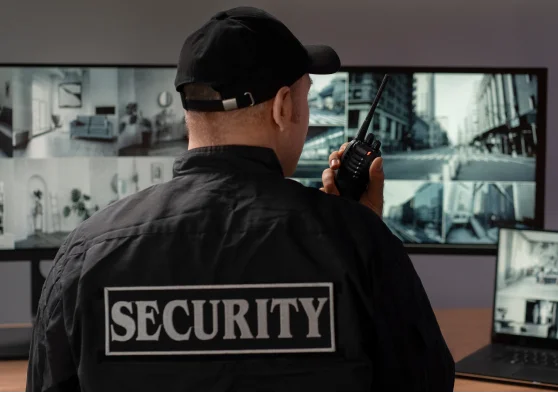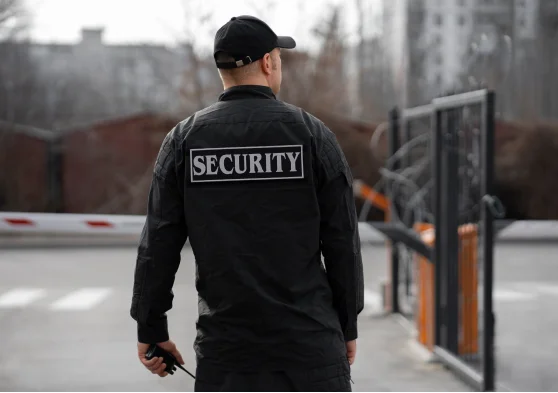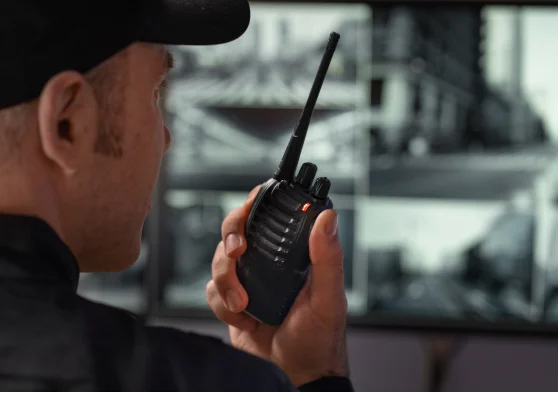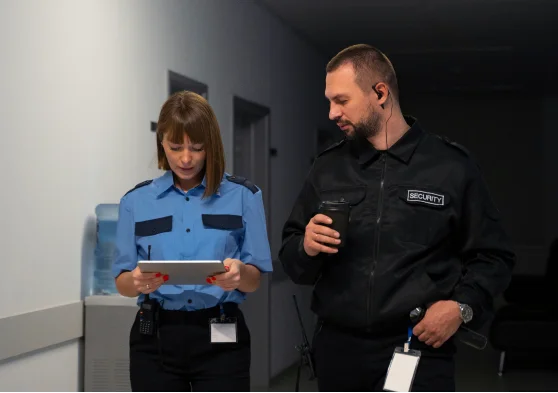Private and Public Schools & Universities Security
In New York, ensuring the safety of students, staff, and visitors at both private and public schools and universities is a top priority. With a growing range of threats—ranging from physical violence and bullying to cyberattacks and mental health crises—effective security measures are essential in creating a safe learning environment. New York’s diverse educational landscape, from public K-12 schools to prestigious private universities like Columbia and NYU, requires tailored security approaches to address unique challenges while complying with local, state, and federal regulations.
Why Security Matters for Public & Private Schools and Universities in NY
- Prevalence of Threats
- Active shooter incidents and violent threats are increasingly on the radar of educational institutions nationwide.
- Bullying, both in person and online, remains a significant concern for students and staff.
- Cybersecurity risks, such as ransomware attacks, target educational institutions, potentially exposing sensitive student and staff data.
- Diverse & High-Risk Populations
- Public schools in NYC and other metropolitan areas serve thousands of students from diverse backgrounds, including those with specific needs (e.g., special education).
- Mental health issues such as depression and anxiety are prevalent and require proactive identification and intervention.
- Regulatory Compliance
- Schools must comply with numerous state and federal regulations, including the Clery Act (colleges), DASA (Dignity for All Students Act), and FERPA (Family Educational Rights and Privacy Act).
- New York State has stringent requirements for school safety, including annual security audits and crisis plans.
Essential Security Measures for Public and Private Schools & Universities in New York
- School Safety Officers
- Public Schools (e.g., NYC DOE):
- School Safety Agents (SSAs) are employed and trained by the NYPD, often stationed at entrances, corridors, and high-risk areas.
- School Resource Officers (SROs): In high schools, SROs help with law enforcement presence and student safety.
- Private Schools:
- Typically rely on private security guards or security personnel trained specifically for educational environments.
- Some high-end private institutions may employ armed security staff or collaborate with local law enforcement for higher protection levels.
- Universities:
- Campus Police or Private Security Teams: Universities like Columbia or NYU have their own campus police departments, while others, such as the City University of New York (CUNY), may work with local police departments.
- Emergency Response Teams: Trained to handle critical incidents like medical emergencies, active threats, or crowd control during demonstrations.
- Public Schools (e.g., NYC DOE):
- Access Control Systems
- Visitor Management Systems: Sign-in/sign-out protocols, ID verification, and temporary visitor badges.
- Badge Access: Staff and students are issued ID cards or RFID badges to access restricted areas such as classrooms, dormitories, or labs.
- Gate & Door Locking Mechanisms: Secure entrances, often with automatic locks during certain hours (e.g., after school hours or after campus closures).
- Surveillance Systems
- CCTV Cameras: Installed throughout key areas such as:
- Entrances and exits
- Hallways, cafeterias, libraries
- Parking lots and athletic fields
- Campus grounds
- Remote Monitoring: On-site security or third-party providers monitor camera feeds in real-time.
- CCTV Cameras: Installed throughout key areas such as:
- Emergency Preparedness & Alerts
- Mass Notification Systems: Alert students, faculty, and parents via text, email, or public address systems for emergencies, weather events, or drills.
- Emergency Response Protocols:
- Lockdown Drills: Regular drills in schools for situations such as active shooters or intruders.
- Evacuation Plans: Clearly defined evacuation routes and meeting points.
- Active Shooter Protocols: Plans and training specific to active shooterscenarios, often with collaboration from law enforcement.
- Cybersecurity
- Firewalls & Network Monitoring: Protection against malware, hacking, and ransomware attacks.
- Data Encryption: Secures sensitive student information, financial records, and research data.
- Safe Online Practices: Education on safe internet habits for students and staff.
- Mental Health & Behavioral Threat Management
- Behavioral Threat Assessment Teams: Multi-disciplinary teams to identify and support students who may pose a risk to themselves or others.
- Crisis Counseling Services: Access to on-campus or in-school counselors to address students’ mental health needs.
- Bullying Prevention Programs: Policies to identify and address both physical bullying and cyberbullying.
- Physical Perimeter Security
- Fencing and Gates: Secure school and university boundaries to prevent unauthorized entry.
- Lighting and Call Boxes: Well-lit walkways, parking lots, and emergency call boxes throughout campus to ensure safety during evening hours.
- Traffic Control: School crossing guards and campus patrols to ensure student safety during peak traffic times.

Types of Schools and Universities in NY That Require Tailored Security

- Public Schools
- New York City Public Schools (NYC DOE): The largest school district in the U.S. with over 1,800 schools.
- Suburban & Rural Public Schools: Includes districts in Westchester, Long Island,and Upstate NY.
- Private Schools
- Elite Private Schools in NYC: Institutions like Trinity School, The Dalton School, and Horace Mann require high levels of security due to their prominence and high-profile students.
- Religious and Charter Schools: Catholic, Jewish, and other faith-based private schools also need tailored security plans for student protection and asset management.
- Colleges & Universities
- Public Universities: The City University of New York (CUNY) system, which includes universities like Baruch College, Hunter College, and City College.
- State Universities: State University of New York (SUNY) system, including schools like University at Buffalo, SUNY Stony Brook, and SUNY Albany.
- Private Universities: Columbia University, New York University (NYU), The New School, and Princeton University are high-profile campuses that require specialized security measures.
- Community Colleges: Colleges like Kingsborough Community College and LaGuardia Community College often focus on securing open-access campuses

Benefits of Security for NY Public & Private Schools and Universities

Benefit Outcome Student Safety & Well-being Ensures a secure environment for learning and personal Growth Crime Deterrence Reduces theft, vandalism, and violence on campus Emergency Response Readiness Faster response to incidents such as violence, fires, or natural disasters Compliance with Regulations Meets safety standards like the Clery Act (colleges) and DASA (K-12 schools) Mental Health Support Proactive measures to manage student well-being and prevent crises Public Trust & Reputation Builds confidence among students, parents, and faculty.

Challenges in NY’s Educational Institutions

- Urban vs. Suburban Security Needs: NYC schools face the unique challenges of high population density and potential gang violence, while suburban schools often struggle with limited resources for advanced security technologies.
- Cybersecurity Threats: Increasing risks of data breaches, ransomware, and phishing in higher education institutions.
- Mental Health Awareness: Rising mental health concerns among students require coordinated efforts between security, counseling, and staff.
- Resource Allocation: Public schools may struggle with the costs of advanced security measures, while private schools have more financial flexibility but may need to address higher expectations for security.

Conclusion

Security in private and public schools and universities in New York is not only about preventing threats—it’s about creating a safe, supportive, and effective learning environment. Whether addressing active shooter preparedness or improving mental health resources, a strong security framework allows institutions to focus on education rather than on reactive measures.
